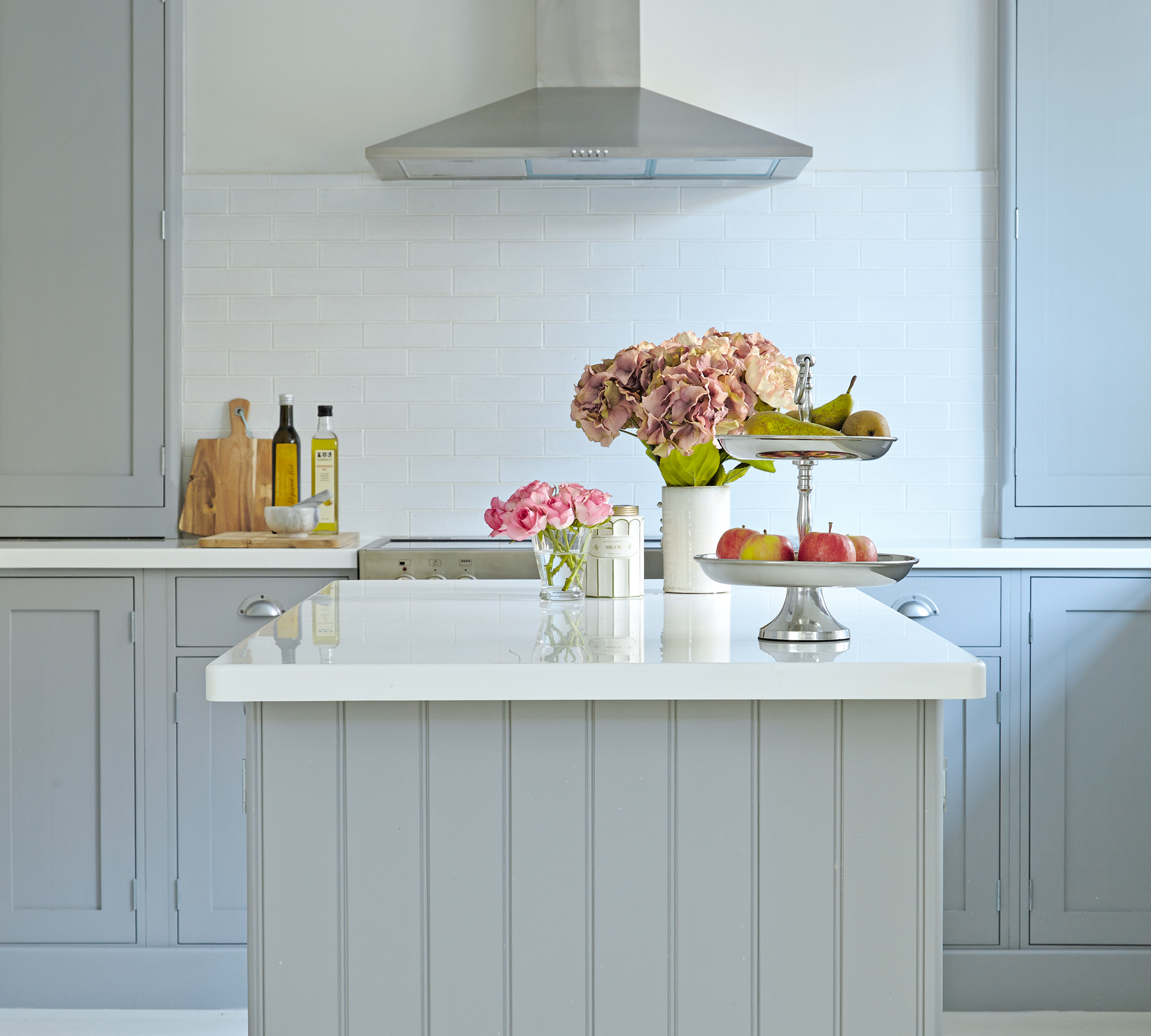What is a monochrome colour scheme? You may have it wrong...
And how to use this seamless design method in your home


There's often some confusion around monochrome colour schemes - despite what you might think, they aren't black and white interiors. A monochrome scheme can involve any colour, as long as it uses only shades and hues of that colour.
There's always new paint trends emerging, but monochrome colour schemes are timeless. They've been used to decorate homes all over the world for decades, and it's not hard to see why. Embracing a single colour in all of its varieties can have just as wonderful an effect as contrasting colour combinations.
'Creating a monochrome scheme is the perfect way to make your favourite colour the ultimate style statement,' says Sophie Devonald, designer at Crown Imperial.
But if you have been wondering what is a monochrome colour scheme - you're not the only one. As we've touched on, this popular design method often gets confused for something it's not, but understanding the nuances of a monochrome colour scheme and everything it can include will help you bring it to life in your own home.
What is a monochrome colour scheme?
We've spoken to interior design experts to get their thoughts on the question, what is a monochrome colour scheme. Here's everything you need to know, plus how to make monochromatic colours work in your home.

What is a monochrome colour scheme?
'A monochrome colour scheme is all about sticking to one colour family and exploring its various shades, tones, and tints,' says Samuel Platt, Creative Manager, Homebase. 'This creates a harmonious, cohesive look that’s both soothing and visually appealing.'
Unlike a complementary colour scheme, a monochrome scheme only uses one colour, but can incorporate different shades and varieties of this colour. It can include darker, lighter, and more or less saturated versions of the same hue. Breaking it down, 'mono' means one, and 'chrome' means colour - both originate from Greek.
Sign up to our newsletter for style inspiration, real homes, project and garden advice and shopping know-how
Black, white and grey colour schemes are often referred to as monochromatic colour schemes in interior design, though technically, it's only monochrome if one of these colours is being used. These colours actually make up achromatic colour schemes, because they lack hues.

Examples of monochrome colour scheme
Now you know the basics of what is a monochrome colour scheme, you'll be pleased to know that the opportunities they provide in interiors are endless. Despite what some people might initially think, monochrome colour schemes are far from boring, and you can really get experimental with bringing this scheme to life.
'Take herb green, for example,' says Samuel. 'Imagine painting your walls in different shades of this fresh, earthy colour. You might use a deep, rich herb green for one accent wall to create a dramatic focal point. Then, go lighter on the other walls with a soft sage or minty green to open up the space and keep the vibe breezy.'
You could use a monochrome colour scheme to create gorgeous green bedroom ideas, and incorporate as many shades and varieties of green as you like. 'Try a matte finish on most walls for a calm, understated look, and add a glossy finish on the accent wall for a pop of light and sheen,' Samuel suggests. 'This can create depth and intrigue without straying from your monochrome theme.'

Many people can often think that monochrome colour schemes have to be neutral, but this is far from the case. Sure, you could have fun with beige living room ideas and experiment with different varieties of this neutral palette, but you're not limited to this with a monochrome colour scheme; just pick any colour that your heart desires, and start selecting paint shades that you love.
'Monochromatic schemes based on blush pinks and natural greens have seen an increased demand, with shades of green being deemed as the new "usable neutral",' says Lorna Williams, head of product design for Amtico. 'The use of these colours brings a sense of calm and order to a space, and combine well with soft industrial looking concretes, and neutral stone and slate floors in large format and simple tile shapes.'
Plus, monochrome colour schemes are created with the furniture and furnishings as much as the paint. The beauty of this design method is that decorating a room in one colour family means that everything you incorporate should go together perfectly.
Should you use a monochrome colour scheme?

If you're a fan of interiors that look cohesive and seamless, a monochrome colour scheme is the ideal way of creating this. You might prefer a palette that has deeper and more vibrant shades, like red or blue, and balancing these out with softer hues.
Other people may use monochrome colour schemes to create a soothing atmosphere in the home. They're ideal for calm bedroom ideas, because rather than stimulating the senses with clashing colours, a uniform palette invokes feelings of relaxation and comfort.
'A monochromatic palette is ideal for those wanting to create a minimalist home interior,' says Suzi Samaddar, Room Styling Expert, furn. 'Drenching a space in one tone creates a stripped-back and relaxing atmosphere - creating a contrast to the chaotic world of today.'
FAQs
What is considered a monochromatic colour scheme?
A monochromatic colour scheme is anything that uses shades of only one colour. As long as only one colour is being used, it's monochromatic.
'Whilst traditionally, monochromatic interior designs are in black and white, the true definition of a monochromatic scheme is in fact the variation of single hue,' says Lorna from Amtico. 'Over the past few years, there has been a heightened desire for spaces that evoke a sense of calm and tranquillity.'
Black and white colour schemes are actually called achromatic colour schemes, because they don't possess different hues. Monochromatic colours have varies shades and varieties, so they can be used to create uniform, but creative colour palettes.

Why do people use monochromatic colours?
Many people use monochromatic colours in their home as a source of comfort. It can be pleasing to the eye to have everything in a room blend seamlessly together, and pairing different hues of the same colour is an easy way to achieve this.
'When our lives feel chaotic, our homes can act as a soothing anecdote,' says Suzi from furn. 'Whilst some create joy in their homes by stimulating the senses with bright colours and patterns, others find happiness in simplicity and restfulness.'
Monochromatic colours are also an opportunity to experiment and get creative. Most colours have so many shades, hues, and tints, and it can be a fun design process to discover these and play with new combinations.
So now that you know the answer to 'what is a monochrome colour scheme', will you be redecorating any rooms in your home with this timeless design method? Remember, just because you're using one colour doesn't mean you can't get creative - happy decorating!

Katie has been writing freelance since early 2022, specialising in all things homes and gardens, following achieving a Masters in Media and Journalism. She started out writing e-commerce content for several of Future’s interior titles, including Real Homes, Gardeningetc, Livingetc, and Homes and Gardens. Since then she’s been a regular contributor on Ideal Home’s digital team, covering news topics, how-to guides, and product reviews.